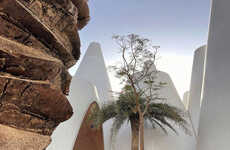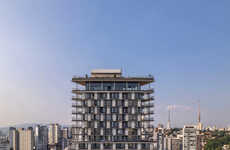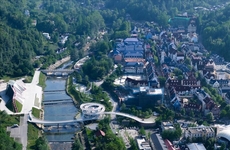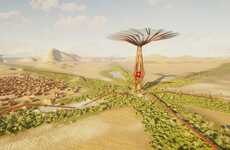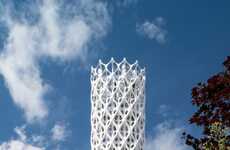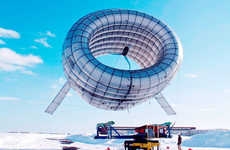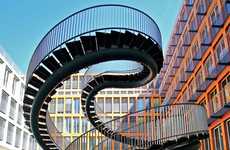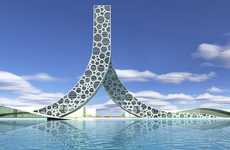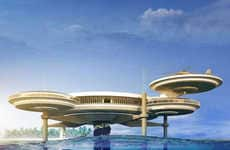
The Berimbau Eco-Tower is Modeled After Brazilian Musical Bow
Katherinev123 — November 14, 2011 — Eco
References: luisdegarrido & archiscene.net
Music inspires everything from fashion to architecture, which is especially true in the design of the Berimbau Eco-Tower, a skyscraper designed after the Brazilian musical bow, the berimbau.
Designed by Luis de Garrido, the Berimbau Eco-Tower is located in Rio de Janeiro, Brazil, and offers a sustainable building for housing the country's telecommunications systems. This instrument-inspired tower features a five-story sphere, suspended in the air, that houses offices, shops, a conference room and a gazebo. It is intended for use during the Rio de Janeiro: the World Cup 2014 and 2016 Olympic Games, says Evolo.
The structure was also made with recoverable materials, which if the building were deconstructed, could be recycled and reused. Further, the sphere on the Berimbau Eco-Tower contains a heated greenhouse, a geothermal heat pump and a double glass skin comprising of tarps and blinds that ensures insulation and low energy loss in the winter.
Designed by Luis de Garrido, the Berimbau Eco-Tower is located in Rio de Janeiro, Brazil, and offers a sustainable building for housing the country's telecommunications systems. This instrument-inspired tower features a five-story sphere, suspended in the air, that houses offices, shops, a conference room and a gazebo. It is intended for use during the Rio de Janeiro: the World Cup 2014 and 2016 Olympic Games, says Evolo.
The structure was also made with recoverable materials, which if the building were deconstructed, could be recycled and reused. Further, the sphere on the Berimbau Eco-Tower contains a heated greenhouse, a geothermal heat pump and a double glass skin comprising of tarps and blinds that ensures insulation and low energy loss in the winter.
Trend Themes
1. Sustainable Architecture - Exploring innovative designs and materials for eco-friendly buildings inspired by unconventional sources.
2. Music-inspired Design - Using musical instruments as a creative inspiration for architectural concepts and structures.
3. Recoverable Materials - Incorporating the use of recyclable and reusable materials in construction projects for sustainability and resource efficiency.
Industry Implications
1. Architecture and Design - Opportunity to create unique and sustainable structures that are inspired by unconventional sources like musical instruments.
2. Construction and Real Estate - Incorporating innovative designs and sustainable materials to meet the growing demand for eco-friendly buildings.
3. Recycling and Waste Management - Providing solutions for deconstructing and repurposing buildings by utilizing recoverable materials and recycling processes.
5.9
Score
Popularity
Activity
Freshness

